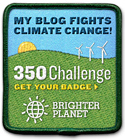Seed Starting #1 - To My Son in Azerbaijan
Use Small Containers First
Start your seeds in small containers, such as yogurt, cottage cheese containers, or a milk carton, laid on its side (about 5cm deep), with the opposite side cut off (staple closed the end that was opened). Some people use egg cartons (expect to transplant quite quickly from such a small container). Make sure you put one or more holes, about half a centimeter in diameter, in the bottom of all these containers. If the holes are too big soil will fall out.

Egg and milk cartons, almost ready for seeds
Prepare the Containers for Sowing
Put newspapers or plastic on your table. Makes clean up much easier.
Fill pots or flats to the top with your potting mixture and firm the soil and level the surface (a flat-bottomed cup or glass work well for this). Water the soil and allow it to drain thoroughly before sowing the seeds. I like to let it sit in a larger container that has water in it, so that the water soaks up from the bottom. That way you are sure to have the entire soil mass wet. This is important, as the soil can be difficult to get wet. You want there to be about .5cm of space above the soil.
Label your containers. If they becomes mixed up you can send me pics later and I can ID them.
Sowing Seeds
Sprinkle the seeds on the surface of the damp soil and cover with a very thin layer of soil. In a egg carton compartment put 2-3 seeds. In a milk carton, put a group of 2 or 3 every couple of inches. Firm the soil. It is important the the seeds have good contact with the soil. The top layer of soil should absorb moisture from the layer below. If possible, continue to water from the bottom. If you must water from a container, use one with a spout or use a thin-lipped glass…something you can control the flow out of. If the water comes out too fast, it will send all the seeds to a corner.

Slip into a plastic bag so you won’t have to water. Leave it open. If you have a heater place your containers near it so they will germinate faster, but be careful, because they will also dry out faster. The top of the fridge is also a warm spot. Some types of seeds will germinate in approximately one week, though some will be faster and others slower. Once germination occurs remove the bag and move them to a sunny spot indoors.
Start your seeds in small containers, such as yogurt, cottage cheese containers, or a milk carton, laid on its side (about 5cm deep), with the opposite side cut off (staple closed the end that was opened). Some people use egg cartons (expect to transplant quite quickly from such a small container). Make sure you put one or more holes, about half a centimeter in diameter, in the bottom of all these containers. If the holes are too big soil will fall out.

Prepare the Containers for Sowing
Put newspapers or plastic on your table. Makes clean up much easier.
Fill pots or flats to the top with your potting mixture and firm the soil and level the surface (a flat-bottomed cup or glass work well for this). Water the soil and allow it to drain thoroughly before sowing the seeds. I like to let it sit in a larger container that has water in it, so that the water soaks up from the bottom. That way you are sure to have the entire soil mass wet. This is important, as the soil can be difficult to get wet. You want there to be about .5cm of space above the soil.
Label your containers. If they becomes mixed up you can send me pics later and I can ID them.
Sowing Seeds
Sprinkle the seeds on the surface of the damp soil and cover with a very thin layer of soil. In a egg carton compartment put 2-3 seeds. In a milk carton, put a group of 2 or 3 every couple of inches. Firm the soil. It is important the the seeds have good contact with the soil. The top layer of soil should absorb moisture from the layer below. If possible, continue to water from the bottom. If you must water from a container, use one with a spout or use a thin-lipped glass…something you can control the flow out of. If the water comes out too fast, it will send all the seeds to a corner.

Slip into a plastic bag so you won’t have to water. Leave it open. If you have a heater place your containers near it so they will germinate faster, but be careful, because they will also dry out faster. The top of the fridge is also a warm spot. Some types of seeds will germinate in approximately one week, though some will be faster and others slower. Once germination occurs remove the bag and move them to a sunny spot indoors.







